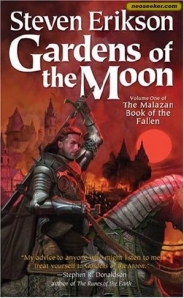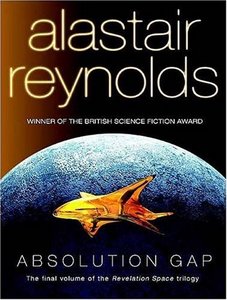 I finished The Player of Games, Iain M. Banks’ second Culture novel, yesterday and truly enjoyed it. It wasn’t a brilliantly written book or even an amazing or inventive narrative (I flashbacked to Ender’s Game regularly, which was published only three years prior to Player). But what I really liked about it was how it didn’t take itself too seriously, it was fast-paced and fairly lighthearted, and a really fun read.
I finished The Player of Games, Iain M. Banks’ second Culture novel, yesterday and truly enjoyed it. It wasn’t a brilliantly written book or even an amazing or inventive narrative (I flashbacked to Ender’s Game regularly, which was published only three years prior to Player). But what I really liked about it was how it didn’t take itself too seriously, it was fast-paced and fairly lighthearted, and a really fun read.
Banks’ Culture is a wonderful setting, too. It is almost the exact opposite of Reynold’s Revelation Space universe. Where as Reynolds’ universe is dark, scary, unconquerable, and oppressive, Banks’ Culture universe is settled, utopian, calm and orderly, and you don’t get the sense there is any real threat to the Culture out there. If push came to shove, I would prefer Reynold’s universe, but Banks’ Culture is quite enjoyable, too. I particularly enjoy his sentient drones and called what happened on the last page just before getting there.
The whole book is a build up to the ending (duh!, right? – but not all books do this well) and the real shocker, like Ender’s Game, is at the end. Ender’s Game did it a lot better, but this was still good, if slightly more predictable. Looking over my shelf, that’s the last sci-fi book I have to read, which is somewhat sad, but also the opportunity to go get more – likely more Reynolds and Banks; I’ve heard Use of Weapons (the 3rd Culture novel) is amazing.
 But for now, I’m headed back to fantasy and am finally ready to begin the enormously daunting and much talked about Malazan Book of the Fallen series by Steven Erikson. On sffworld.com, there are three distinct groups of people: those who hate the first book (often because of how confusing they say it is) and never finish it or the series, those who like the first book but find it ridiculously confusing, and either do or do not continue the series, and those who love both the first book and the series.
But for now, I’m headed back to fantasy and am finally ready to begin the enormously daunting and much talked about Malazan Book of the Fallen series by Steven Erikson. On sffworld.com, there are three distinct groups of people: those who hate the first book (often because of how confusing they say it is) and never finish it or the series, those who like the first book but find it ridiculously confusing, and either do or do not continue the series, and those who love both the first book and the series.
Now, this series has a huge advantage in my opinion – it is completed! I hate reading series books that are not yet completed. That is not to say that I will read all ten, fat, Malazan books in a row, but I like to know that there is a concluding volume on the shelf somewhere and that the author won’t up and die before finishing.
The Malazan series is what is apparently now known as BFF – Big, Fat, Fantasy. I like those. Yes, they are confusing because they’re so large. No, you won’t be able to grasp every name, place, and concept within the first 50 pages, and yes, a lot will be asked of you as the reader. I know that. I accept that. Which is probable why I’m 50 pages into Garden of the Moon and am not having any trouble with it. I refer to the maps (which are impoverished in the paperback version I have) and to the glossary regularly. Nether of which is 100% helpful. But that is ok – I’m being taken for the ride and I’m going to enjoy it. The writing is fine so far, in my opinion – another frequent complaint I’ve read, so that’s good. Apparently, the story is going to jump around a lot in terms of people, places, and even time. Ok, so what? Pay attention, follow along, and if worse comes to worst, there are several kind and energetic folks out there who have written chapter by chapter guides! So far, the story and the characters have grabbed me; the writing has succeeded in putting me squarely in a fantasy-war ravaged environment that I can see and feel in my mind’s eye; and sense of the huge setting with all of its complicating factors is palpable. I’ve not yet been confused. There’s stuff I don’t understand, but I feel like I will, the more I read. So, in essence, I’m not afraid of this book and I felt like I might be. And I’m poised to enjoy it! Here we go!

